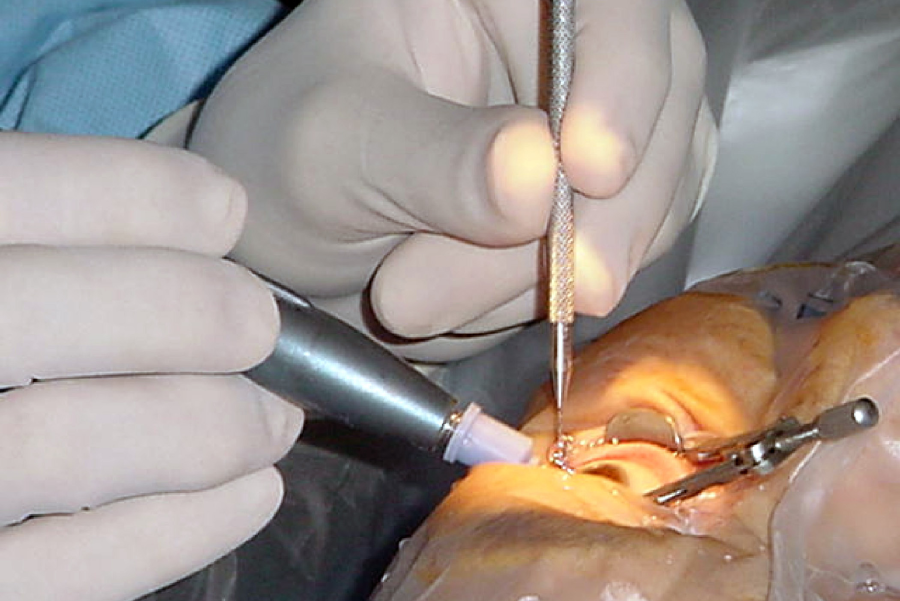
Twenty-five years ago, cataract surgery was a major operation which required several days of hospital recovery and full immobilization to allow the eye to heal. Today, cataract removal surgery is one of the most common procedures performed, with a greater than 95 percent success rate. Cataract surgery is a day-care procedure performed at eye surgery centres around the country, and afterward, patients can generally resume many of their normal activities the following day.
Here are a few of the latest surgical techniques and innovative tools that have improved outcomes and patient satisfaction for Cataract treatment.
Customized Intraocular Lenses
Cataract surgery involves removing the deteriorated crystalline eye lens of the patient and replacing it with an artificial lens called an intraocular lens (IOL). Patients can choose from many options including monofocal, astigmatism-correcting or multifocal. New IOLs are introduced each year; the eye surgeon will provide a recommendation after performing comprehensive tests including Keratometry, A-scan biometry, and OCT scan. Our team of cataract doctors includes some of the best cataract surgeons in Kanyakumari, providing personalized care and utilizing customized intraocular lenses to ensure optimal visual outcomes. Whether you require cataract removal surgery or are exploring options for multifocal IOLs or toric IOLs to correct astigmatism, Dr. John’s Eye Hospital is dedicated to meeting your needs for the best cataract surgery in Kanyakumari.
Small Incision Cataract Surgery and Phacoemulsification
IOLs are specially engineered to be placed in small incisions, as tiny as 2 millimeters. Modern lens removal uses phacoemulsification, which incorporates ultrasound waves to break up the deteriorated lens. After the lens has been fragmented, it is vacuumed and the new IOL can be inserted into the same incision used for phacoemulsification. Most corneal incisions are so small that they do not even require sutures. Small incision cataract surgery (SICS) is another procedure which is a very safe and cost-effective sutureless procedure with equally good outcomes with good surgical expertise.
Laser-Assisted Cataract Surgery
In traditional Phacoemulsification cataract surgery, a surgeon uses a metal or diamond blade to create the corneal incision. Laser-assisted cataract surgery uses a femtosecond laser to create a bladeless incision, capsulorhexis, and nuclear pre-fragmentation, providing new alternative technologies for patients and ophthalmologists. However, it is expensive and not cost-effective currently because the visual recovery is almost equal to traditional Phacoemulsification in the long term as per studies.
Presently, individuals over 70 years of age still wish to maintain an active lifestyle, including driving a car and often performing sports. Cataract surgery is no longer a procedure to eliminate the obstacle in vision providing some restoration of vision. It became a refractive procedure to eliminate all refractive errors, including astigmatism, but also in many cases managing co-existing presbyopia. A longer lifespan brings some new encounters, including more surgeries performed on patients with dementia and other comorbidities related with aging, including glaucoma and retinal disorders. Moreover, the anticipated duration of intraocular lens (IOL) in the eye has significantly increased, thus physicochemical properties and IOL endurance should allow the IOL to keep its optical properties for up to three decades.
From early intracapsular cataract extraction to extracapsular cataract extraction, to current phacoemulsification cataract surgery, the incision ranges from 12 to 3 mm, and sometimes to even 1.8 mm or less, and the revolution in cataract surgery is ongoing. Cataract removal surgery has transformed from vision recovery to refractive surgery, leading to the era of refractive cataract surgery, and premium intraocular lenses (IOLs) such as toric IOLs, multifocal IOLs, and extended depth-of-focus IOLs are being increasingly used to meet the individual needs of patients. With its advantages of providing better visual acuity and causing fewer complications, phacoemulsification with monofocal IOLs is currently the mainstream cataract surgery technique worldwide.
For patients with a requirement to correct corneal astigmatism, Toric IOLs creates a new possibility to meet their personal requirements during the cataract surgery process, and spectacles-independence could be achieved in which over 70% patients can see far without glasses.
Multifocal IOLs, Trifocal IOLs is another option for spectacle free vision after cataract surgery for Distant, Intermediate & near vision. Despite extensive positive experiences with multifocal IOLs, a relatively few driving patients showed dissatisfied symptoms postoperatively due to glare, halo at night. Premium Trifocal IOLs have come up which is relatively much better and devoid of most of the disadvantages of older generation Multifocal IOLs,
Meanwhile, a new type of IOLs, the extended depth-of -focus (EDOF) IOLs, appears in the public field of vision. It can make up for the gap between the monofocal IOLs and the multifocal IOLs, by improving intermediate distance visual acuity and providing better contrast sensitivity.
With advancements in surgical techniques, intraocular lenses (IOLs), instruments, and guidance systems, we can expect to see continued improvement in patient visual outcomes and safety in the field of Ophthalmology. For the patients seeking the best treatment for cataracts in Kanyakumari, Dr. John’s Eye Hospital offers advanced cataract surgery options including phacoemulsification surgery and laser treatment for cataracts.